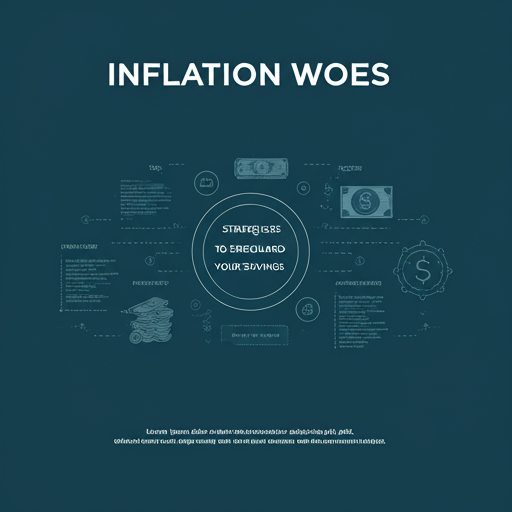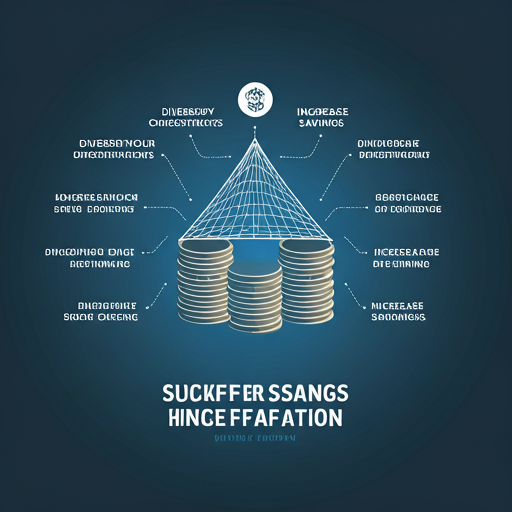Introduction to Wealth Management in the Cryptocurrency Era
Overview of Wealth Management
Wealth management has evolved significantly with the rise of cryptocurrency. This shift requires professionals to understand digital assets deeply. Many investors now seek guidance on integrating crypto into their portfolios. It’s essential to recognize the unique risks and opportunities presented by these assets. Cryptocurrency can be volatile and complex. This complexity demands informed decision-making. Knowledge is power in this new landscape. Clients need tailored strategies that reflect their individual goals. Each investor’s journey is unique.
The Rise of Cryptocurrency
The emergence of cryptocurrency has transformed traditional financial paradigms. Investors are increasingly allocating capital to digital currencies. This trend necessitates a comprehensive understanding of blockchain technology. Many financial professionals are adapting their strategies accordingly. The volatility of cryptocurrencies presents both risks and opportunities. Risk management is crucial in this environment. Investors must evaluate their risk tolerance carefully. Each decision can significantly impact portfolio public presentation. Knowledge is essential for success.
Importance of Adapting to Client Needs
Adapting to client needs is crucial in wealth management. Financial advisors must recognize diverse client profiles. Key factors include:
Understanding these elements allows for tailored strategies. Each client has unique requirements. Personalized approaches enhance client satisfaction. This is essential for long-term relationships. Advisors should regularly reassess client portfolios. Continuous engagement fosters trust and loyalty. Knowledge is power in finance.
Objectives of the Article
Here are 10 trending article titles for a financial website based on the latest news and analysis of financial trends: No input data
Understanding Client Demographics
Millennials and Gen Z Investors
Millennials and Gen Z investors exhibit distinct financial behaviors. They prioritize technology and digital platforms for transactions. This demographic values transparency and ethical investing. They often seek investments that align with their values. Additionally, they are more inclined to explore alternative assets, such as cryptocurrencies. This shift reflects a broader acceptance of innovative financial products. Understanding these preferences is essential for advisors. Tailored strategies can enhance engagement and satisfaction. Personalization is key to building trust.
High-Net-Worth Individuals (HNWIs)
High-Net-Worth Individuals (HNWIs) possess significant financial resources. They often require specialized wealth management services. This group typically seeks personalized investment strategies. Their portfolios may include diverse asset classes, such as real estate and alternative investments. Additionally, HNWIs prioritize tax efficiency and estate planning. Understanding their unique needs is crucial for advisors. Each decision can have substantial financial implications. Tailored approaches foster long-term relationships. Trust is essential in wealth management.
Institutional Investors
Institutional investors play a pivotal role in financial markets. They include entities such as pension funds, insurance companies, and endowments. These organizations typically manage large pools of capital. Their investment strategies often focus on long-term growth and risk mitigation. Institutional investors require comprehensive research and analysis. This ensures informed decision-making and optimal asset allocation. Each investment decision can influence market dynamics. Understanding their objectives is essential for effective engagement. Knowledge is key in this competitive landscape.
Global Market Trends
Global market trends significantly influence investment strategies. Economic indicators, such as GDP growth and inflation rates, guide decision-making. Investors must analyze geopolitical developments and regulatory changes. These factors can impact asset valuations and market stability. Additionally, technological advancements are reshaping financial landscapes. Understanding these trends is essential for effective portfolio management. Each market shift presents unique opportunities and risks. Knowledge is crucial for informed investing. Staying updated is vital for success.
Technological Innovations in Wealth Management
Blockchain Technology
Blockchain technology offers significant advantages in wealth management. It enhances transparency and security in transactions. By utilizing decentralized ledgers, he can reduce fraud risks. This technology also streamlines processes, improving efficiency. Additionally, smart contracts automate and enforce agreements. Each innovation can lead to cost savings. Understanding blockchain is essential for modern finance. Knowledge is power in this evolving landscape.
Robo-Advisors and AI
Robo-advisors and AI are transforming wealth management. They provide automated investment solutions tailored to individual needs. By utilizing algorithms, they analyze vast amounts of data. This enables efficient portfolio management and risk assessment. Additionally, robo-advisors lower costs compared to traditional advisors. They democratize access to financial services. Each client benefits from personalized strategies. Understanding these tools is essential for modern investors. Knowledge is key in this digital age.
Data Analytics and Client Insights
Data analytics has transformed wealth management by enabling advisors to derive actionable insights from vast datasets. This shift allows for more personalized investment strategies tailored to individual client profiles. Understanding client behavior is crucial. He can leverage predictive analytics to anticipate market trends and client needs. This proactive approach enhances client satisfaction. Technology is reshaping the financial landscape. Advanced algorithms can analyze risk factors more efficiently than traditional methods. He can make informed decisions quickly. The integration of artificial intelligence further streamlines operations. It’s a game changer in wealth management. Embracing these innovations is essential for competitive advantage.
Security and Compliance Technologies
Technological innovations in wealth management have significantly enhanced security and compliance measures. By utilizing blockchain technology, he can ensure transaction integrity and transparency. This reduces the risk of fraud. Additionally, advanced encryption methods protect sensitive client data. He can trust that his information is secure. Regulatory technology, or RegTech, streamlines compliance processes, making them more efficient. This minimizes the potential for human error. As a result, firms can focus on strategic growth. Staying compliant is crucial in today’s environment.
Investment Strategies for Cryptocurrency
Diversification in Crypto Portfolios
Diversification in crypto portfolios is essential for managing risk effectively. By allocating investments across various cryptocurrencies, he can mitigate potential losses. This strategy reduces exposure to market volatility. Additionally, incorporating eifferent asset classes enhances overall portfolio stability. He should consider both established coins and emerging tokens. This approach balances potential returns with risk. Furthermore , regular portfolio rebalancing is crucial. It ensures alignment with market conditions. Staying informed is vital for success.
Long-Term vs. Short-Term Investments
Long-term investments in cryptocurrency often yield substantial returns due to market appreciation over time. He can benefit from compounding personal effects. Conversely, short-term investments capitalize on market volatility for quick gains. This approach requires active monitoring and swift decision-making. He must be prepared for rapid changes. Additionally, risk tolerance plays a crucial role in choosing a strategy. Understanding personal financial goals is essential. Each strategy has its merits. Diversifying between both can optimize outcomes.
Risk Management Techniques
Effective risk management techniques are vital in cryptocurrency investments. By employing stop-loss orders, he can limit potential losses. This strategy automatically sells assets at predetermined prices. Additionally, position sizing helps manage exposure to individual assets. He should never invest more than he can afford to lose. Diversification across various cryptocurrencies further mitigates risk. This approach reduces the impact of market volatility. Regular portfolio reviews are essential for adapting to market changes. Staying informed is crucial for success.
Emerging Trends in Crypto Assets
Emerging trends in crypto assets are shaping investment strategies significantly. He should consider decentralized finance (DeFi) platforms, which offer innovative financial services. These platforms often provide higher yields compared to traditional investments. Additionally, non-fungible tokens (NFTs) are gaining traction as unique digital assets. They represent ownership of digital art and collectibles. Another trend is the rise of stablecoins, which aim to reduce volatility. He can use them for safer transactions. Staying updated on regulatory developments is crucial. Regulations can impact market dynamics.
Client Education and Engagement
Importance of Financial Literacy
Financial literacy is crucial foe effective client education and engagement . By understanding key financial concepts, clients can make informed decisions. This knowledge empowers them to manage their investments wisely. Additionally, financial literacy fosters trust between clients and advisors. He can feel more confident in his choices. Educational resources, such as workshops and webinars, enhance client understanding. These tools facilitate meaningful discussions about financial goals. Furthermore, personalized financial plans can be developed based on informed insights. Engaging clients in their financial journey is essential.
Workshops and Seminars
Workshops and seminars play a vital role in client education and engagement. They provide structured environments for learning about financial topics. He can gain insights from industry experts during these sessions. This interaction fosters a deeper understanding of complex concepts. Additionally, workshops encourage networking among participants. He can share experiences and strategies with peers. Practical exercises often enhance retention of information. Engaging clients in discussions promotes active learning. These events can significantly improve client confidence in financial decision-making.
Utilizing Digital Platforms for Engagement
Utilizing digital platforms for engagement enhances client education significantly. These platforms offer accessible resources and interactive content. He can easily access webinars and online courses. This flexibility accommodates diverse learning preferences. Additionally, social media fosters community and discussion among clients. He can share insights and ask questions in real time. Personalized communication through digital channels strengthens relationships. Clients feel more connected to their financial advisors. Engaging clients online is essential for modern financial education.
Building Trust through Transparency
Building trust through transparency is essential in client education and engagement. By openly sharing information about fees and investment strategies, he fosters a sense of security. Clients appreciate clarity in financial dealings. Additionally, regular updates on portfolio performance enhance accountability. He can demonstrate commitment to their financial well-being. Transparency also encourages informed decision-making among clients. They feel empowered to ask questions and express concerns. This open dialogue strengthens the advisor-client relationship. Trust is the foundation of successful financial partnerships.
The Future of Wealth Management in Cryptocurrency
Predicted Market Trends
Predicted market trends indicate significant growth in cryptocurrency wealth management. He can expect increased institutional adoption of digital assets. This shift will enhance market stability and credibility. Additionally, regulatory frameworks are likely to germinate, providing clearer guidelines. He should stay informed about these changes. Furthermore, the integration of artificial intelligence will optimize investment strategies. This technology can analyze vast data sets efficiently. As a result, personalized financial solutions will become more accessible. Understanding these trends is crudial for future success.
Regulatory Changes and Their Impact
Regulatory changes are reshaping the landscape of cryptocurrency wealth management . He can anticipate stricter compliance requirements for financial institutions. This will enhance consumer protection and market integrity. Additionally, clearer regulations may attract more institutional investors. He should consider the implications for asset valuation. Furthermore, tax regulations will likely evolve, impacting investment strategies. Understanding these changes is essential for effective planning. Staying informed will help him navigate the complexities. Adaptability is key in this dynamic environment.
Adapting to Technological Advancements
Adapting to technological advancements is crucial for the future of wealth management in cryptocurrency. He must embrace blockchain technology to enhance transaction security. This innovation provides transparency and reduces fraud risks. Additionally, utilizing artificial intelligence can optimize investment strategies. It analyzes market trends more efficiently than traditional methods. Furthermore, digital platforms facilitate real-time client engagement. He can offer personalized services based on data insights. Staying ahead of technological trends is essential for competitive advantage. Continuous learning will ensure he remains relevant in the industry.
Conclusion and Call to Action
The future of wealth management in cryptocurrency presents significant opportunities. He should actively engage with emerging technologies to enhance his strategies. This includes leveraging blockchain for security and transparency. Additionally, understanding regulatory changes is essential for compliance. He must stay informed about market trends and client needs. Adapting to these kinetics will ensure long-term success. Taking proactive steps is crucial for growth. He can start by investing in educational resources. Embracing innovation will position him as a leader.







